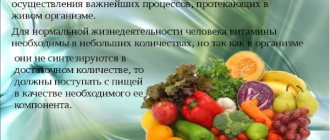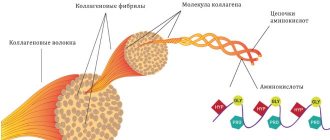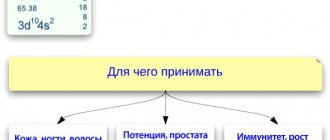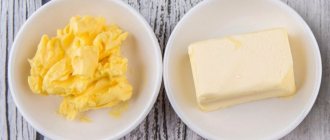Valine is one of the essential amino acids, of which there are only eight. In addition, the amino acid is part of the BCAA complex, which contains only three amino acids. Why was valine awarded a place in the top three, and why is it so important to take valine in bodybuilding? Below we will analyze the properties and role in sports. And also, what foods and supplements contain the amino acid.
Valine: structural formula
An aliphatic radical is a hydrocarbon chain attached to the same carbon as the amine head and carboxyl tail. The carbon skeleton of valine is one carbon larger than alanine, but not one carbon sequence, but two, is attached to the second carbon atom (in the β-position), i.e. The amino acid appears to be bifurcated at one end, which is why it is called a branched-chain amino acid.
Being a proteinogenic amino acid, valine is part of the body's proteins.
Like other amino acids (except glycine), valine exists in two optical stereoisomers: left-handed (L) and right-handed (D). Only L-valine is found in natural proteins; D-valine is formed as a result of chemical synthesis and is a ballast amino acid that loads the liver.
Essential amino acid valine: history of discovery
Three German researchers shared the right to be considered the discoverers of valine. The history of the discovery of the substance began in 1856, when the scientist Gorup-Besanets studied extracts of the pancreas. Later, in 1879, this amino acid was studied by the chemist P. Schutzenberger as a product of protein hydrolysis. The chemical formula of valine was only able to be deduced in 1906 by E. Fisher, experimenting with casein. Immediately after this, research began on the properties of this compound. Since 1982, the essential amino acid valine has been produced in many countries. Currently, the total production of this substance exceeds 150 thousand tons per year.
Metabolism of valine
Valine is an essential amino acid. The body does not synthesize this compound, and it must come from outside through food.
Branched chain amino acids (valine, leucine, isoleucine) account for about 45% of the content of all essential amino acids in tissues. Branched amino acids prevent the breakdown of proteins to the same extent as the introduction of a full set of amino acids.
Once in the gastrointestinal tract, valine enters the liver. The liver lacks enzymes to metabolize branched chain amino acids. It delays other amino acids for biochemical transformations, and branched ones, incl. Valine gives the green light to enter the general bloodstream. As a result, the amino acids of food protein are separated, and predominantly a mixture of branched chain amino acids is sent to the muscles, the same three friends - valine, leucine, isoleucine. It is there that they enter into amino group transfer reactions, providing muscles with energy.
The formation of a pool of free branched chain amino acids in the liver depends on the content of taurine, which regulates the conversion of amino acids into glucose.
In muscles, branched-chain amino acids are included in muscle protein synthesis, forming a reserve from which they can be mobilized during exercise. During work, muscle protein breaks down, and branched amino acids enter a chain of biochemical transformations, the end product of which is glucose, which provides energy for work. It must be said that the intramuscular fund of free amino acids remains constant throughout the work, but after the load it increases, i.e. there is a certain inertia of the biochemical conveyor.
The need for valine is 3 - 4 g per day.
Minimum daily requirement for an adult: 14 mg. per 1 kg. body weight, for children - 110 mg. per 1 kg. body weight. You should not focus on the minimum daily requirement; it is not physiological, ensuring survival, but not a full life.
Why is L-isoleucine used in sports?
Why is the amino acid so popular in sports and used in BCAA complexes? This is because the amino acid is involved in the synthesis of new muscle fibers, which means it has anabolic properties. Due to the fact that the amino acid is broken down within 20-30 minutes and goes directly to the muscles, which need rapid recovery after heavy physical activity, and not to the liver. This explains why BCAAs, including L-isoleucine, are needed after and during exercise to further muscle growth and prevent catabolism.
Structural function of valine
Valine is part of almost all proteins, giving them hydrophobic properties, i.e. The protein repels water from itself, hanging in the aquatic environment as an autonomous globule droplet. This amino acid is especially abundant in albumin, casein, and connective tissue proteins; it also accumulates in muscles. The valine content in protein ranges from 4.1% (horse muscle tissue) to 7-8% (human serum albumin, milk casein) and up to 13-14% (connective tissue elastin).
Valine is one of the main components in the synthesis of muscle proteins and tissues of the human body. It is necessary for the growth and development of all tissues, repairing damage to tissue proteins, and maintaining normal levels of nitrogen metabolism in the body. Valine in a mixture with other branched amino acids is used to correct severe amino acid deficiencies resulting from addiction to drugs, as well as as parenteral nutrition when caring for seriously ill patients.
Valine is a precursor to vitamin B3 (pantothenic acid).
It protects the myelin sheath, an insulator of nerve fibers in the brain and spinal cord, the destruction of which causes neurological diseases, the most dangerous of which is multiple sclerosis.
Energy function of valine
Valine is a glucogenic amino acid that is metabolized into succinyl CoA and then included in the Krebs cycle, releasing energy for muscle function. The conversion involves dehydrogenase enzymes, NAD, vitamins B7 (biotin) and B12.
Together with its branched brothers - leucine and isoleucine - it provides energy for muscle function, which is why bodybuilders love it. During exercise, branched chain amino acids, and valine in particular, are the main source of amine nitrogen in skeletal muscle. A significant part of them is released during the breakdown of muscle proteins, which requires an increase in the consumption of these amino acids with food. Taking commercial preparations of branched chain amino acids in these conditions is justified because it compensates for the stress breakdown of muscle proteins.
general characteristics
In 1901, the German chemist Emil Fischer first isolated valine from casein by hydrolysis of proteins. This amino acid gets its name from valerian. Today this substance is known as an essential amino acid, which stimulates the activity of the body, contributes to the formation and maintenance of its structural and functional integrity.
Content:
- general characteristics
- Role in the body
- Functions and Benefits of Valine
- Valine for bodybuilders
- Daily requirement
- Amino acid deficiency
- Overdose: what is the danger
- Food sources
- Interaction with other substances
Valine is an aliphatic amino acid with a non-polar character. It is closely related to leucine and isoleucine, with which it has a number of common properties. These hydrophobic substances rarely take part in biochemical reactions, but play a critical role in determining the three-dimensional structure of proteins. In addition, valine promotes the absorption of other amino acids.
Valine (L and D isomers) is also known as a glucogenic amino acid. That is, if necessary, the liver is able to transform this substance into glucose, which the muscles then use as an additional source of energy. In addition, it serves as the starting material for the synthesis of vitamin B3 and penicillin.
Regulatory function of valine
Valine is involved in regulating the functioning of the pituitary gland: a gland in the brain that tunes the body’s hormonal orchestra. It stimulates the production of growth hormone, which supports protein synthesis as opposed to protein breakdown.
In alcoholism and drug addiction, characteristic imbalances of amino acids have been identified, incl. with a branched chain, among which valine plays an important role. In emotional disorders associated with addiction, brain cells require more energy, which they obtain by utilizing branched chain amino acids, particularly valine. The breakdown of proteins in areas of the brain that respond to the regulation of emotions and the general tone of the body is activated, which leads to disruption of the functional activity of these areas and an increase in feelings of depression and irritability.
Valine affects the production of the hormone of joy - serotonin. Valine deficiency provokes depression, and, conversely, when amino acids are in balance, mood improves, a person experiences a surge of vigor and an increase in overall vitality, which is why valine is used to treat depression. Valine and tryptophan are competitors for transport when crossing the blood-brain barrier. Excess valine inhibits the accumulation of tryptophan in the brain and, in case of overdose, can lead to impaired brain function, including hallucinations.
In alcoholic encephalopathy (impaired brain function), due to poor liver function poisoned by alcohol, the concentration of aromatic amino acids (tryptophan, phenylalanine) in the blood increases and the number of branched chain amino acids (valine, leucine, isoleucine) decreases. As a result of competition for transport that carries amino acids across the blood-brain barrier, the concentration of valine in the brain decreases and tryptophan increases. This does not lead to anything good, because the absence of branched amino acids deprives the brain of energy to produce neurotransmitters. An energy-deficient brain plunges into depression and begins to work through the roof, which is externally expressed in a weakening of mental parameters.
The amino acid valine is used to treat drug and alcohol addiction, because alcoholism and drug addiction lead to severe amino acid deficiency. Additional consumption of valine helps prevent relapses and prolongs remission.
Valine improves muscle coordination and reduces sensitivity to pain. It improves adaptability to heat and cold. Being a glucogenic amino acid, it suppresses appetite and reduces sugar cravings through regulating blood sugar levels.
Contraindications
- Impaired excretion of isoleucine.
- Acidosis.
- Chronic kidney diseases.
- Diseases of the cardiorespiratory system and heart rhythm disturbances.
When taking isoleucine, it is prohibited to take vitamin B9 (folic acid), the amino acid reduces the concentration of B9 in the blood.
Although there is information that drugs with isoleucine are harmless to pregnant women and the fetus, it is still necessary to take any drugs strictly as prescribed by the doctor!
Sources of valine
The largest amount of valine is found in eggs, cheese and other dairy products, meat, fish, especially salmon, and squid. From plant products, valine can be obtained in decent concentrations from nuts, especially walnuts, pistachios, red beans, pumpkin and sunflower seeds, and seaweed.
During the cooking process, the content of valine in products changes: in meat, chicken, fish it becomes more when stewing or boiling than in a raw product or after frying. In eggs, on the contrary, when frying, the amount of valine increases compared to the raw or cooked product.
For good absorption of valine, the presence of other branched-chain amino acids is necessary - leucine and isoleucine in the ratio valine : leucine : isoleucine = 1 : 1 : 2. In commercial preparations this balance is maintained.
The absence of valine in food makes it incomplete and leads to a negative nitrogen balance, i.e. the body will break down its own proteins and remove nitrogen. This state cannot last long, because it leads to exhaustion and death.
Valine goes well with slow carbohydrates (cereals, wholemeal bread) and polyunsaturated fatty acids (fish oil, flaxseed oil).
BCAAs for the athlete. How to take valine correctly
To achieve athletic performance, it is best to take valine along with leucine and isoleucine. It has been proven that taking these amino acids together enhances the effectiveness of these amino acids. The use of BCAAs for athletes today is the norm.
It is believed that the optimal proportion is 2:1:1, where two parts are leucine. Trainers recommend drinking this supplement with juice that contains fructose. It is this carbohydrate that stimulates the production of insulin, which helps in the absorption of BCAAs. It is better to take these amino acids 20 minutes before meals or immediately after training.
We looked at the essential amino acid valine, its beneficial properties, and also named the foods that contain it. Proper use of this substance as an element of sports nutrition will allow you to quickly recover from injuries and improve training results.
Valine in food
Using the table, you can calculate how much food you need to eat per day to get the amino acid necessary for life.
So, only 100 g of Parmesan is enough, you will have to eat 2 eggs, and drink almost 1.5 liters of milk. However, you can get by with 150 g of beef, 140 g of turkey or pork tenderloin. If you are a vegetarian, then you will have to eat a glass of peeled pumpkin seeds or eat 400 g of boiled soybeans (which is unlikely) or more than half a kilo of pea porridge (which is absolutely incredible), you will need half a kilo of walnuts, you can not count the rest of the products, because you will need to eat the required amount not within human power. I’m not calling for anything, I’m just showing by example what the dangers of a vegetarian diet are.
Results
As you can see in each of the essential amino acid content tables, they are all found in plant foods. Moreover, the vast majority of them are found more in plant foods than in animal products. For example, soybeans provide meat with almost all essential amino acids. Therefore, the statement that essential amino acids can only be obtained from meat and animal products is nothing more than another myth about vegetarianism! When you hear this nonsense, feel free to share this link and increase the literacy of the population










